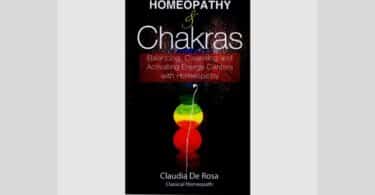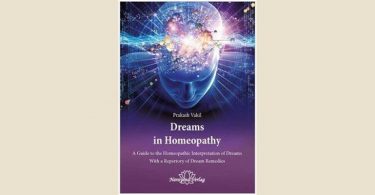Title: Survival – The Reptiles, Volume 1 and 2
Authors: Rajan Sankaran and Meghna Shah
Published by: Homeopathic Medical Publisher, Mumbai, India
Year of publication: 2010
Book details: Paperback, 1178 pages, full color.
Reviewer: Vatsala Sperling
This book is the result of extensive research and study of the natural behavior of reptiles, materia medica, repertories and cases. The authors Dr. Rajan Sankaran and Dr. Meghna Shah made a prediction that use of this book will lead to a likely increase in the prescription of reptilian remedies.
Made in 2010, this prediction has indeed come true. Prior to this book by Sankaran and Shah, as homeopaths, we had inherited six volumes of materia medica published by Dr. Samuel Hahnemann in the years 1811, 1816, 1817, 1818, 1819 and 1821. This body of work does not mention any remedies from reptiles.
Only after Constantine Hering proved Lachesis (around 1830) and Crotalus (1837) did snake remedies find their way into our materia medicas. Many contemporary authors have written about snake remedies, but only focused on well-known snakes like Cenchris, Crotalus, Lachesis, Naja and Vipera.
No one except Sakaran and Shah have explored the full scope of not just snakes but other reptiles as well, from the standpoint of the sensation method, materia medica and repertories and produced a very comprehensive book. After their publication in 2010, a decade would pass, when Frans Vermeulen’s book would appear on the horizon in 2020 and this book would showcase all reptiles, including snakes.
As the sensation method, discovered and taught by Dr. Rajan Sankaran, continued to gain precision and exactness, the key words and hand gestures of various reptilian remedies could be readily differentiated leading to fine-tuned prescriptions.
This development elevated the number of available reptilian remedies (from the earlier century) to several fold, and quite exotic reptilian remedies became rather common. Such a development called for a systematic textbook on the subject and Drs. Sankaran, and Shah have skillfully delivered what we needed.
“If we could know more of the habits of these creatures from which our animal remedies are derived, we would use them with far greater accuracy…” H.A. Roberts said in 1936, and Drs. Sankaran and Shah’s work with the reptile remedies proves this point splendidly.
At the very outset, the authors emphasize that grouping of remedies into plants, minerals and animals is based on the commonality and core patterns inherent in these groups and all the research / advancement in the identification of inherent patterns does not minimize the importance of materia medica, repertories and the foundational philosophy of classical homeopathy.
Then why study the patterns at all? For this, the authors say, “The knowledge of Lachesis from our materia medica helps us to understand snakes, similarly, our understanding of snakes helps us see Lachesis more clearly and we can see it as a part of the group of reptiles. By considering a remedy source as a member of a related group, we are naturally led to consider the nuances that differentiate the group members, and this allows more intricate discrimination of related close remedies.
But before we get to the finer differentiation part, we ought to familiarize ourselves with the fundamental style of case taking per the sensation method, and become adept at identifying kingdoms, subkingdoms, source language, and gestures.
Survival – The Reptiles, Volume 1
The layout of volume 1 includes an introduction to reptiles followed by a section on four reptilian sub-orders – testudines, crocodylia, squamata, rhynochocephalia, and finally dinosaurs. The authors ask that we first read and understand the natural behavior of an animal and then proceed to read the homeopathic derivations, so we may get a more complete picture.
But simply learning the bio-physiological features and behavioral details about reptiles, is not enough. We must also learn how to listen for and identify the subtle human expressions that mirror the inner reptilian song in our patients. A section on ‘Human expressions’ shows us what expressions clearly and directly point to reptilian remedies.
From pages 104 till 512, this book is fully packed with information about reptiles that will help us in spotting them in our cases. The chapter on testudines, crocodylia, and squamata inform us about anatomy, shell, food habits, mating rituals, natural behavior, method of attack and defense, hibernation, burrowing, and cryptic behavior of sea turtles, snapping turtles, box turtles, tortoises, crocodiles, alligators, caimans, gharials, lizards, iguanas, and worm lizards. A few illustrative cases bring to our attention the expressions people might use as they reveal their inner song of a particular animal.
Survival – the Reptiles, Volume 2
This book brings us to the creepiest of all reptiles, snakes, followed by tuataras and dinosaurs. So far, we have been familiar with just a few snakes, but this volume addresses this shortcoming in our knowledge and brings many more snakes, including non-venomous ones, to our awareness. The section on snakes includes list of homeopathic remedies, habits, physiology, special behavioral characteristics, food, hunting, mating, camouflage, as well as attack and defense mechanisms.
Expressions of snakes in humans include details about main issues of animals, (sensation level A), issues of retiles (sensation level B), snake survival patterns in humans, energy patterns observed in snake cases, and various human equivalents of snake survival strategies. Snake alert words, and comparison between snakes and mammals, and spiders are given in a convenient table format.
Various families of snakes – Colubridae, Boidae, Elapidae, and Viperidae go into representative snakes from which remedies are available and specific human expressions that call out for snake remedies. Family Colubridae does not include any cases, but the Boidae, Elapidae and Viperidae are richly sprinkled with illustrative cases.
An additional strength of this volume is that it contains materia medica and repertory information for several rather well-known snakes, Elaps, Naja, Cenchris, Bothrops, Crotalus, Lachesis, and Vipera. Though Tuatarra has a very small section, the Dinosaur section includes proving, materia medica information, and cases from Nany Herrick.
Volume 1 and 2 of Survival, the reptiles, has been a go-to textbook for gaining a homeopathic perspective about reptiles since the day these two volumes were published. The depth, width and presentation style of these books are rather impressive, and as foundational textbooks, they should be present in every homeopathy student’s personal library.
I am highly optimistic that these books, a labour of love by Dr Rajan Sankaran and Dr. Meghna Shah, will continue to inform, motivate, and inspire homeopaths for generations to come.




I wish I can download this book, constantly asking for business email.. whatever that is supposed to be